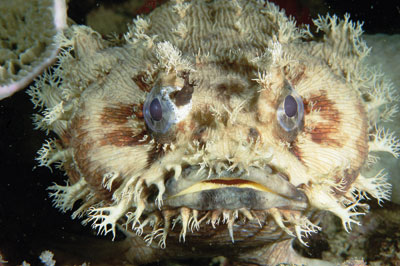摘要:许多鸟类,哺乳类和两栖类动物使用不同频率和音量来传递声波。 康奈尔大学学者Aaron Rice, Bruce Land 和 Andrew Bass发现,鱼类使用非连续性的声线发出声音,如跳跃频率或独立的双声带。

会唱歌的鱼
Many birds, mammals and amphibians vary the frequency and intensity of their vocalizations to expand their vocabulary. Aaron Rice, Bruce Land and Andrew Bass at Cornell University in Ithaca, New York, show that fish also use forms of 'acoustic nonlinearity', such as frequency jumps and biphonation — the simultaneous expression of two independent frequencies.
The authors recorded and analysed the vocal calls of three-spined toadfish (Batrachomoeus trispinosus; pictured), which produce 'hoots' and 'grunts' by vibrating their swim bladders. Around 35% of the fish's calls had at least one form of nonlinearity. Severing the animals' vocal motor nerve stopped them producing these effects.
The fact that fish make complex vocalizations previously found only in four-limbed vertebrates suggests that there is a major selection pressure to produce innovation in acoustic signals.







